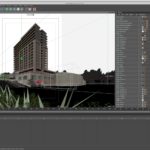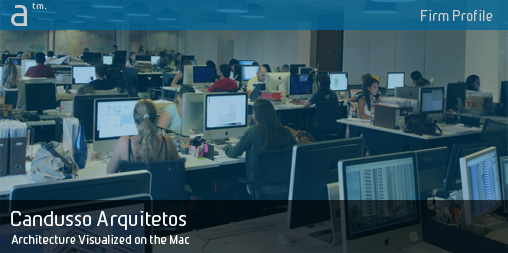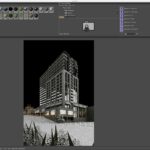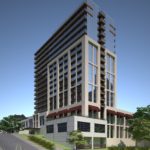Continued from page 1
RC: The computer model is generally created from basic 2D drawings or 3D BIM models. We study massing, each new element, shapes, textures and colors in order to create a unique identity for each building. Each project has intense rendering work, where the specified materials will ultimately be presented in a photorealistic manner, as much as possible approaching the reality.
Advertisement
AFR: Are there any special projects of note that utilized 3D renderings or animations in a unique way that lead to project success?
RC: All of our projects are illustrated thoroughly in 3D animation, mainly through a virtual walk-through process. Object animations are also adopted to explain the construction process. Among projects in which we utilized this form of animation, I can cite the Florida penthouses, Hotel in Brasilia, the Condominio Residencial Riveria de Ponta Negra em Manaus, and Modulus where we did stereoscopic 3D animation showing the assembly of a precast construction system.
AFR: I understand your firm uses Maxon’s CINEMA 4D software. Can you tell us why you have chosen CINEMA 4D (C4D) as your rendering and animation solution? What lead to that decision?
RC: Sure, the main reasons are because of feature set, ease of use, speed and their constant innovation. We chose to work with CINEMA 4D because it provides us excellent modeling tools, good representation of the materials applied as textures, and lighting that is almost real. Thus, the illustrative images of the projects we are creating are very realistic, giving our clients the exact idea of what’s going to be built.

03 - A view of Candusso's work in C4D. All their renderings and animations are done in Maxon's application.
AFR: What operating system platform do you run CINEMA 4D on, Mac or PC or both? And can you explain a bit more about how C4D works in conjunction with other CAD or BIM software in use?
RC: Our chosen platform is Apple’s Mac environment, because of its stability and processing performance. We use Vectorworks as our software for developing the projects, and the interface between C4D and Vectorworks is excellent and does not negatively affect the creative process. Both applications have become powerful tools and this is a crucial point for us. When designing you have to be focused on realizing the dreams of your clients and not wasting time on problems of communication between your software.
AFR: Your firm largely does work in South America. Does it also do work beyond that continent?
RC: Our market is very large. Brazil, until recently, consumed all the energy of our office. In the last five years we have begun challenging ourselves to find new markets, new challenges. The current economic environment is not favorable, but showing our work out there can provide more opportunity.
AFR: Can you describe your design process at your firm? How does technology work in conjunction with your design process?
next page: Design Process and Software Pipeline







Reader Comments
Comments for this story are closed